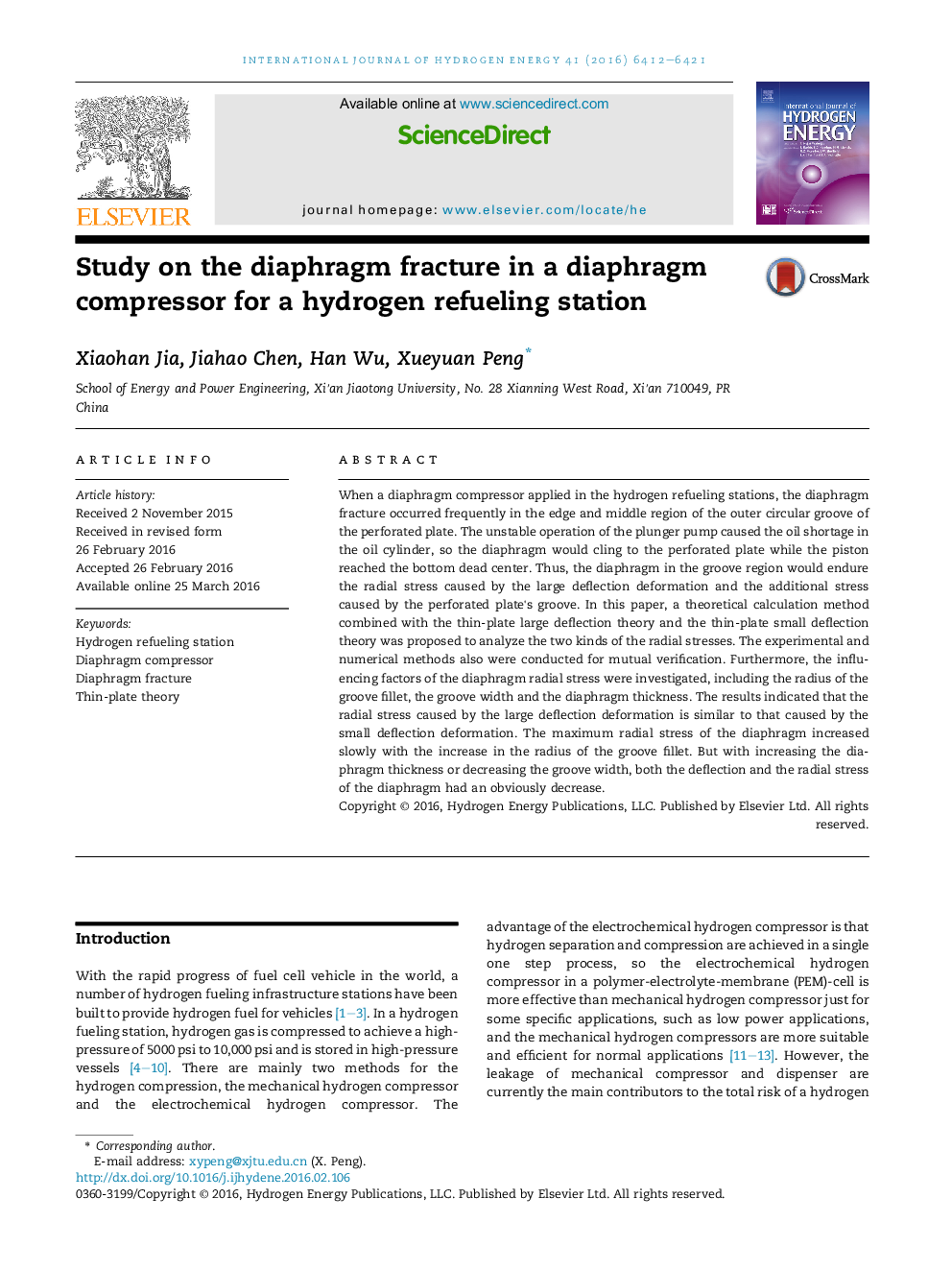| Article ID | Journal | Published Year | Pages | File Type |
|---|---|---|---|---|
| 7711228 | International Journal of Hydrogen Energy | 2016 | 10 Pages |
Abstract
When a diaphragm compressor applied in the hydrogen refueling stations, the diaphragm fracture occurred frequently in the edge and middle region of the outer circular groove of the perforated plate. The unstable operation of the plunger pump caused the oil shortage in the oil cylinder, so the diaphragm would cling to the perforated plate while the piston reached the bottom dead center. Thus, the diaphragm in the groove region would endure the radial stress caused by the large deflection deformation and the additional stress caused by the perforated plate's groove. In this paper, a theoretical calculation method combined with the thin-plate large deflection theory and the thin-plate small deflection theory was proposed to analyze the two kinds of the radial stresses. The experimental and numerical methods also were conducted for mutual verification. Furthermore, the influencing factors of the diaphragm radial stress were investigated, including the radius of the groove fillet, the groove width and the diaphragm thickness. The results indicated that the radial stress caused by the large deflection deformation is similar to that caused by the small deflection deformation. The maximum radial stress of the diaphragm increased slowly with the increase in the radius of the groove fillet. But with increasing the diaphragm thickness or decreasing the groove width, both the deflection and the radial stress of the diaphragm had an obviously decrease.
Related Topics
Physical Sciences and Engineering
Chemistry
Electrochemistry
Authors
Xiaohan Jia, Jiahao Chen, Han Wu, Xueyuan Peng,
